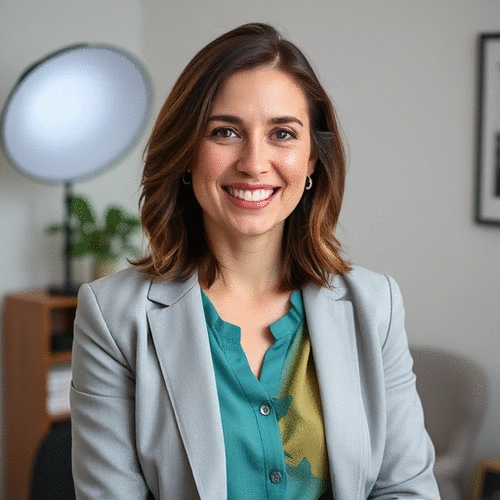Eggs (Nits): Laid close to the scalp, hatch within 7-10 days.
Choosing Effective Lice Treatments for Kids
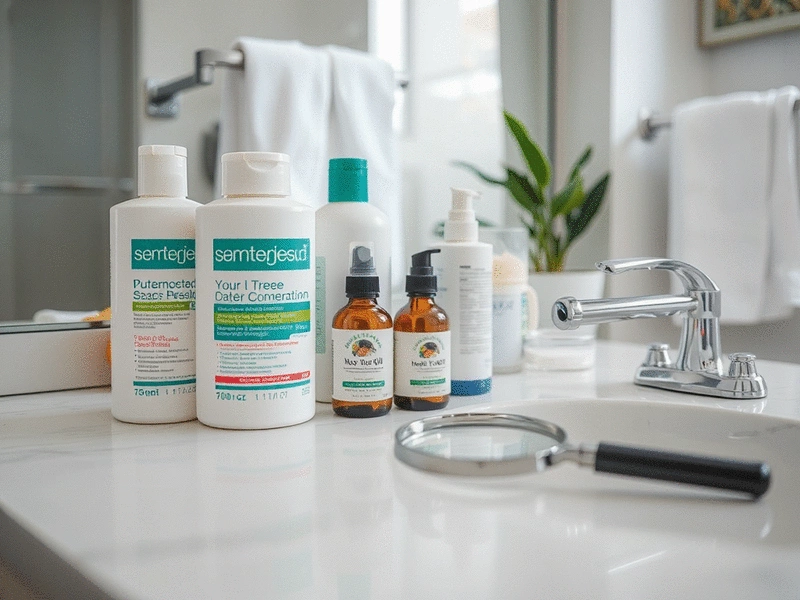
What if I told you that understanding head lice is not just about treatment but also about prevention and proactive measures? In the world of pediatric health, knowledge is your best weapon against these tiny pests. Here are the key takeaways that will empower you to manage head lice with confidence.
What You Will Learn
- Head lice spread primarily through direct head-to-head contact, making it essential to educate children about personal space during play.
- Common symptoms of infestation include persistent itching, visible lice or nits, and an irritated scalp, all of which require prompt inspection.
- Understanding the life cycle of lice—from eggs (nits) to adults—helps in implementing timely and effective treatment strategies.
- Post-treatment care is crucial; regularly check for new lice, follow up with treatments as needed, and monitor all family members for symptoms.
- Preventive measures, like avoiding sharing personal items and using preventive sprays, can significantly reduce the risk of re-infestation.
- Cleaning your environment after an infestation, including washing linens and vacuuming, is vital to ensure your home is lice-free.
The Head Lice Life Cycle and Prevention Flow
Understanding the life cycle of head lice and effective prevention strategies is key to managing infestations. The visual below outlines the three stages of a lice infestation and key steps for post-treatment care and prevention.
Life Cycle of Lice: Infestation Dynamics
Nymphs: Baby lice emerging from eggs, mature in 9-12 days.
Adults: Live up to 30 days, lay hundreds of eggs.
Post-Treatment & Prevention Flow
Post-Treatment Care: Comb daily, follow-up treatment (7-10 days).
Prevention: Avoid head-to-head contact, no sharing items.
Environmental Cleaning: Wash linens, vacuum, seal non-washables.
Understanding Head Lice and Their Impact on Children
Head lice can be a significant concern for parents, especially when it comes to their children's health and comfort. These tiny pests, while not harmful, can cause a lot of distress. At Lice Nits, I, Dr. Emily Hargrove, am committed to helping families navigate this common issue with confidence and knowledge.
Understanding head lice is the first step in effectively managing infestations. With over a decade of experience in pediatric care, I’ve seen firsthand how quickly lice can spread among children, particularly in schools and daycare settings. Let’s dive deeper into what head lice are, how they spread, and their impact on children’s well-being.

What Are Head Lice and How Do They Spread?
Head lice are small, wingless insects that live on the scalp and feed on human blood. They are typically about the size of a sesame seed and can be challenging to detect without a thorough inspection. These pests spread primarily through direct head-to-head contact, which is common during playdates, sleepovers, and even in classrooms.
- Head-to-head contact: This is the most common way lice spread, especially among children.
- Sharing personal items: Lice can also transfer through shared hair accessories, hats, or even pillows.
- Close living conditions: Environments like schools and daycare centers can facilitate quick spread.
Understanding these transmission methods helps parents take proactive measures to protect their children. It's crucial to educate kids about the importance of not sharing personal items to minimize the risk of lice infestations.
Common Symptoms of Head Lice Infestation
The symptoms of head lice can often be mistaken for other conditions, which is why awareness is key. The most common signs include persistent itching, which occurs due to an allergic reaction to the lice bites. According to the American Academy of Pediatrics (AAP), identifying these symptoms early is crucial for prompt intervention. I know how alarming it can be to see your child scratching their head more than usual!
- Itching: The primary symptom, often leading to discomfort and irritation.
- Visible lice or nits: Look for tiny, white eggs attached to hair shafts.
- Red or irritated scalp: Scratching can lead to redness or even secondary infections.
If you notice any of these symptoms, it’s essential to inspect your child’s scalp and hair closely. Early detection can save you from a more extensive infestation and the stress that accompanies it.
The Life Cycle of Lice: Understanding Infestation Dynamics
To effectively combat head lice, it’s helpful to understand their life cycle, which consists of three main stages: eggs (nits), nymphs, and adults. Each stage plays a role in the infestation process, and knowing this can guide treatment decisions.
- Eggs (Nits): Laid by adult females, they are often found close to the scalp and can hatch within 7-10 days.
- Nymphs: These baby lice emerge from the eggs and mature into adults in about 9-12 days.
- Adults: Adult lice can live for up to 30 days on a person's head and can lay hundreds of eggs during their lifespan.
Understanding this life cycle can help you determine the right treatment approach. For example, if you notice nits, it’s crucial to address them promptly to prevent the next generation of lice from spreading.
Interactive Poll: Your Experience with Lice
Have you ever dealt with head lice in your family? We want to hear your thoughts!
Next Steps: Following Up After Treatment
After tackling head lice, it’s essential to take post-treatment care seriously. Many parents wonder what comes next, and I’m here to guide you through the important steps to ensure complete lice removal and prevent re-infestation. Remember, the battle against lice is not just about the treatment but also about what you do afterward!

Post-Treatment Care: Ensuring Complete Lice Removal
Once you've applied the chosen treatment, it’s crucial to follow up effectively. Here’s a simple checklist to help you ensure you’ve tackled those pesky lice:
- Use a fine-tooth lice comb to remove dead lice and nits.
- Check your child's scalp daily for any signs of new lice or remaining nits.
- Schedule a follow-up treatment as recommended, typically 7-10 days after the initial application. The Centers for Disease Control and Prevention (CDC) provides detailed guidelines on effective treatment and follow-up.
- Monitor family members for symptoms, as lice can spread quickly.
Taking these steps can help you feel confident that you’ve addressed the issue thoroughly. I often remind parents that prevention is just as important as treatment!
Preventive Measures to Avoid Future Infestations
To keep lice at bay, implementing some simple preventive measures can make a world of difference. Here are a few strategies I recommend:
- Encourage your children to avoid head-to-head contact during play.
- Teach them not to share personal items like hats, brushes, or hair accessories.
- Consider using preventive lice sprays or essential oils—some parents find these helpful.
- Regularly check your child's hair, especially after sleepovers or school events. The California Department of Public Health offers additional resources on preventing the spread of head lice.
These measures can significantly reduce the risk of re-infestation. Remember, staying proactive is a key part of the process!
Environmental Cleaning: Disinfecting Personal Items
Cleaning your home after a lice infestation is also an important step. It can feel overwhelming, but you can take it one step at a time! Here’s how to effectively clean your environment:
- Wash all bed linens, clothing, and towels in hot water and dry them on high heat.
- Vacuum carpets and furniture, especially in areas where your child spends time.
- Seal non-washable items, like stuffed animals, in a plastic bag for two weeks.
- Clean hair accessories with hot, soapy water or throw them away if they can't be cleaned.
By taking these cleaning steps, you can ensure that your home is lice-free and ready for your family to relax without worry!
Frequently Asked Questions About Lice Treatments
As a health educator, I often receive many questions about lice treatment. It’s completely normal to have concerns, especially when dealing with head lice. Let's dive into some of the most common questions parents have!
What Should I Do If OTC Treatments Fail?
First, don't panic! Sometimes, over-the-counter treatments may not be effective due to resistance from the lice. If you find yourself in this situation, consider reaching out for a second opinion or consult a healthcare provider. They can recommend stronger prescription options or evaluate potential underlying issues.
When to Seek Prescription Options for Head Lice
If your child still shows signs of lice after using OTC treatments, it’s time to consult a pediatrician. They may prescribe prescription treatments that are designed to tackle resistant strains of lice. This is especially important if your child experiences irritation or allergic reactions from OTC products.
Understanding School Policies on Lice Management
Each school has its policies regarding lice management, and it’s good to familiarize yourself with them. Many schools require children to remain home until they are lice-free, so be sure to communicate with your child’s school nurse for guidance on how to handle any lice-related situations.
Making Informed Choices for Your Child’s Head Lice Treatment
Empower yourself with knowledge when it comes to head lice treatment. Being informed means you can make the best choices for your child’s health and well-being!
Pediatrician Recommendations for Lice Treatment
Consulting with your child’s pediatrician can provide valuable insights into the most effective lice treatment options. Pediatricians often recommend treatments based on efficacy and safety, ensuring that you choose the best path forward.
Guidelines for Family Treatment and Management
When one child is affected, it’s important to consider treating the entire family. Lice can spread quickly, so taking a family-wide approach can help eliminate any lingering chances of infestation. Ensure that all family members are checked and treated as necessary, and remember to communicate openly about any concerns or experiences you share.
Common Questions About Head Lice
- What are the primary ways head lice spread?
- Head lice spread mainly through direct head-to-head contact, but they can also transfer by sharing personal items like hats, brushes, and hair accessories.
- What are the most common symptoms of a head lice infestation?
- The most common symptoms include persistent itching of the scalp, the presence of visible lice or nits (eggs) attached to hair shafts, and an irritated or red scalp due to scratching.
- What are the three stages of the head lice life cycle?
- The three stages are eggs (nits), which hatch in 7-10 days; nymphs, which are baby lice that mature in 9-12 days; and adults, which can live up to 30 days and lay many eggs.
- What is crucial for post-treatment care after a head lice infestation?
- Post-treatment care involves using a fine-tooth comb daily to remove dead lice and nits, checking the scalp regularly for new signs of lice, and scheduling a follow-up treatment 7-10 days after the initial application, as recommended by the CDC. It's also important to monitor all family members.
- What preventive measures can help avoid future head lice infestations?
- Preventive measures include teaching children to avoid head-to-head contact and not to share personal items, using preventive lice sprays if desired, and performing regular checks of your child's hair, especially after social gatherings.
- How should I clean my home environment after a lice infestation?
- To clean your environment effectively, wash all bed linens, clothing, and towels in hot water and dry them on high heat. Vacuum carpets and furniture, and seal non-washable items in a plastic bag for two weeks. Clean hair accessories thoroughly or discard them if they cannot be cleaned.
Recap of Key Points
Here is a quick recap of the important points discussed in the article:
- Head lice spread primarily through head-to-head contact and sharing personal items.
- Common symptoms include persistent itching, visible lice or nits, and a red or irritated scalp.
- Understanding the life cycle of lice—nits, nymphs, and adults—is crucial for effective treatment.
- Post-treatment care involves using a fine-tooth comb, daily scalp checks, and monitoring family members for symptoms.
- Preventive measures include avoiding head-to-head contact, not sharing personal items, and regular hair inspections.
- Cleaning the environment is essential to eliminate lice; wash linens and vacuum areas where the child spends time.
Popular Posts
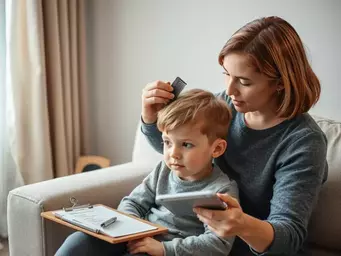 Have you ever felt the panic that arises when you discover head lice on your child's scalp? Understa
Have you ever felt the panic that arises when you discover head lice on your child's scalp? Understa
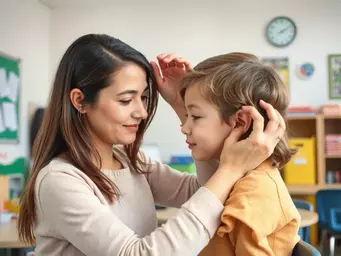 It's surprising how easily something as small as a head louse can disrupt an entire school community
It's surprising how easily something as small as a head louse can disrupt an entire school community
 What if the key to your child's comfort and well-being lies in understanding the aftercare process f
What if the key to your child's comfort and well-being lies in understanding the aftercare process f
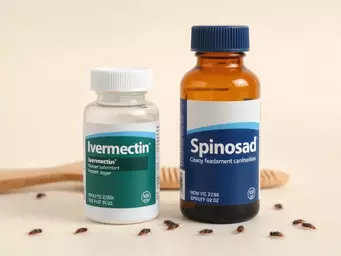 What if a single application could free your family from the stress of head lice? One-dose treatment
What if a single application could free your family from the stress of head lice? One-dose treatment
